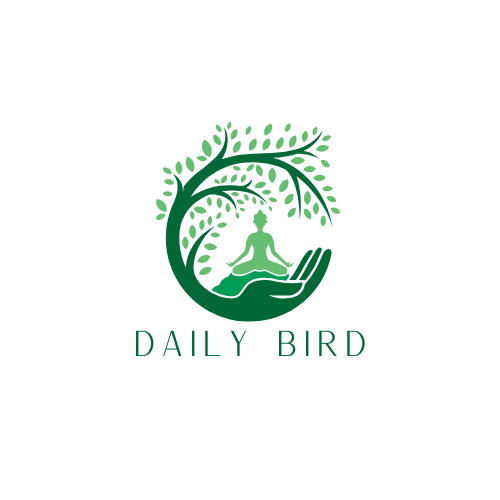In the world of storytelling, pacing can make or break a narrative. Imagine reading a thrilling novel that suddenly hits the brakes, leaving you wondering if the author took a coffee break. That’s where the narrative pacing score comes into play. It’s like a speedometer for your story, measuring how well the plot zips along and keeps readers glued to the pages.
A well-timed narrative can create suspense, evoke emotions, and even spark laughter, while poor pacing can lead to yawns and eye rolls. Understanding and mastering the narrative pacing score isn’t just for seasoned authors; it’s crucial for anyone looking to craft compelling stories. So buckle up and explore how this score can transform your storytelling from a leisurely stroll to a rollercoaster ride of excitement. After all, who wouldn’t want their readers hanging on every word?
Understanding Narrative Pacing Score
A narrative pacing score quantifies the rhythm of storytelling, indicating how well a plot maintains reader interest. Grasping its significance allows writers to refine their craft.
Definition and Importance
A narrative pacing score measures the speed and flow of a story, assessing how effectively scenes transition and build tension. It plays a crucial role in determining reader engagement, influencing their emotional responses. Balanced pacing keeps the story moving while allowing for reflection, enhancing character development and plot clarity. Effective pacing contributes to the overall reading experience, preventing monotony or confusion. A well-executed pacing score ensures that action sequences excite and quieter moments resonate, ultimately guiding the audience through a compelling narrative journey.
How It Influences Storytelling
Pacing directly affects storytelling by altering the reader’s experience. When pacing accelerates, tension mounts, thrilling audiences during climactic moments. In contrast, slower pacing offers opportunities for deeper emotional connections and reflection. Crafting varied rhythms throughout a narrative sustains engagement, maintaining readers’ interest across various scenes. Additionally, effective pacing can amplify humor, surprise, or anticipation, enhancing the overall impact. Writers who master narrative pacing create dynamic, memorable stories that resonate with audiences long after the final page.
Key Components of Narrative Pacing Score

The narrative pacing score comprises several essential components that shape the overall effectiveness of storytelling. Understanding these key elements enhances a writer’s ability to engage readers consistently.
Character Development
Character development plays a vital role in narrative pacing. Well-rounded characters evolve throughout the story, maintaining reader interest. Readers often connect with characters on an emotional level, so pacing should align with their journeys. Slow moments where characters reflect can enhance depth, inviting readers to understand motivations. Conversely, action-packed scenes propel the narrative forward, ensuring the pacing varies. Balancing moments of introspection with dynamic events keeps readers invested. Effective character arcs that shift at the right moments lead to more impactful storytelling.
Plot Progression
Plot progression significantly contributes to narrative pacing. It encompasses how events unfold and the speed at which they occur. Timely reveals and escalating conflicts drive the story, generating anticipation. Each scene should serve a purpose, directly linking to the central plot. When pacing accelerates during crucial moments, tension heightens, making climaxes more thrilling. Slow scenes offer opportunities for character exploration and foreshadowing. Effective plot pacing ensures that readers remain engaged, compelling them to keep turning pages. Balancing fast-paced action with slower transitions creates a rhythm that enhances the overall narrative experience.
Tools and Techniques for Measuring Narrative Pacing Score
Numerous tools and techniques assist writers in measuring narrative pacing score effectively. These approaches help analyze rhythm, maintain reader engagement, and improve storytelling.
Analytical Methods
Several analytical methods exist for evaluating narrative pacing score. One popular technique involves breaking the story into scenes and noting their individual lengths. Writers assess the transition between fast-paced and slow moments, focusing on shifts that maintain tension. Another method includes reader surveys, gathering feedback on which parts feel rushed or sluggish. Utilizing structured critiques improves understanding of story flow. Plot mapping serves as a valuable tool too, outlining key events and their pacing alongside character arcs. Writers visualize pacing, determining where adjustments can enhance emotional impact.
Software Applications
Various software applications help writers analyze narrative pacing score efficiently. Tools like Scrivener and Final Draft enable users to track word counts and scene lengths, providing insights into pacing dynamics. Apps such as Pacemaker allow for real-time pacing analysis, identifying where the rhythm slows or accelerates. Some writers may opt for editing tools like Grammarly, which offer readability statistics and highlight sentence structure. Additionally, specialized narrative building software, including Plottr, assists in organizing plot points and character development while examining pacing. These tools streamline the process and ensure narratives remain compelling throughout.
Applications of Narrative Pacing Score
Narrative pacing score has significant applications across various storytelling mediums. Understanding its impact can enhance how narratives resonate with audiences.
In Literature
In literature, narrative pacing score shapes the reading experience. Readers become more engaged with well-paced stories that balance action and introspection. Authors leverage pacing to build tension, creating anticipation during climactic moments. Slow pacing allows for character development, revealing nuanced motivations. Effective transitions between fast and slow scenes maintain reader interest throughout the novel. Literary techniques like foreshadowing and flashbacks can also benefit from careful pacing, enhancing the overall narrative flow.
In Film and Television
In film and television, pacing influences viewer engagement heavily. Editors utilize narrative pacing score to craft scenes that evoke emotions, from excitement to suspense. Quick cuts in action sequences heighten adrenaline, while slower beats allow for emotional resonance. Writers carefully design dialogue pacing to mirror character dynamics and enhance plot progression. Story arcs depend on effective pacing, ensuring each episode or scene drives the narrative forward. By understanding pacing, filmmakers create compelling stories that captivate audiences from beginning to end.
Mastering narrative pacing score is essential for any storyteller aiming to captivate their audience. By understanding the delicate balance between action and reflection writers can create a rhythm that keeps readers engaged. This skill not only enhances emotional impact but also ensures that every scene contributes meaningfully to the overall narrative.
Utilizing analytical tools and techniques allows writers to refine their pacing further. Whether in literature or visual media, effective pacing transforms a good story into a memorable experience. As writers embrace the nuances of narrative pacing they unlock the potential to resonate with readers long after the final page is turned.





